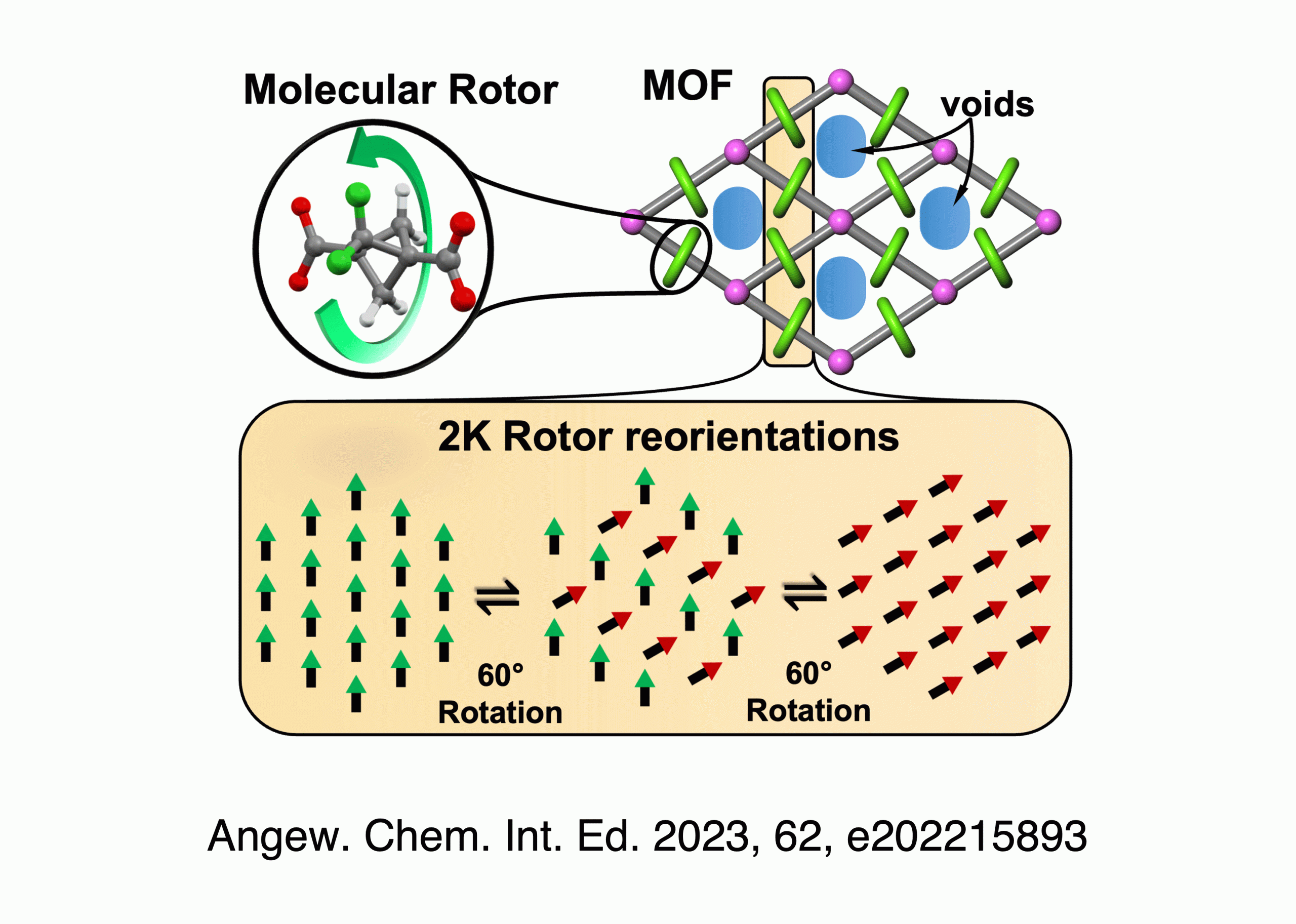J. Perego, C. X. Bezuidenhout, S Bracco, S. Piva, G. Prando, C. Aloisi, P. Carretta, J. Kaleta, T. P. Le, P. Sozzani, A. Daolio, and A. Comotti
Angew. Chem. Int. Ed. 2023, 62, e202215893
Abstract
Fluorinated Metal-Organic Frameworks (MOFs), comprising a wheel-shaped ligand with geminal rotating fluorine atoms, produced benchmark mobility of correlated dipolar rotors at 2 K, with practically null activation energy (Ea=17 cal mol−1). 1H T1 NMR revealed multiple relaxation phenomena due to the exchange among correlated dipole-rotor configurations. Synchrotron radiation X-ray diffraction at 4 K, Density Functional Theory, Molecular Dynamics and phonon calculations showed the fluid landscape and pointed out a cascade mechanism converting dipole configurations into each other. Gas accessibility, shown by hyperpolarized-Xe NMR, allowed for chemical stimuli intervention: CO2 triggered dipole reorientation, reducing their collective dynamics and stimulating a dipole configuration change in the crystal. Dynamic materials under limited thermal noise and high responsiveness enable the fabrication of molecular machines with low energy dissipation and controllable dynamics.

